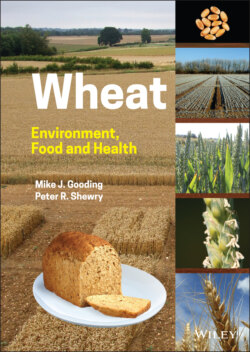Читать книгу Wheat - Peter R. Shewry - Страница 39
1.5.3 Water Absorption
ОглавлениеDetermining the amount of water absorbed by flour is a crucial test used by bakers to optimise the mixing conditions for baking. Bakers therefore specify the level of water absorption (WA) for the flours they purchase, and millers adjust their milling conditions to achieve this level.
Although WA is affected by starch, protein, and fibre (see Chapter 8), the major concern of millers is the contribution of starch damage. This is because starch is the major component in the grain and damaged starch absorbs 3–4 times its own weight of water, compared with 0.5 times for undamaged starch. Starch damage is easier to achieve when milling hard wheats because they respond to higher grinding pressures during roller milling (Ford 1987). It is difficult to obtain high starch damage in soft wheats without excessive pressures leading to overheating and bran contamination (Ford 1987). Damaged starch leads to greater WA in dough formation, and more rapid fermentation rates. Both processes are desirable for modern breadmaking processes (Carson and Edwards 2009). The large amounts of water absorbed by hard flours also contribute to the longer shelf life of bread (shelf life being determined by drying and starch retrogradation). Hence, hard wheats are preferred for breadmaking (Figure 1.21). By contrast, flours from soft wheats absorb little water and are preferred for the manufacture of most types of biscuit (cookies) where the low water content reduces the required baking time, cost, and the risk of cracking during cooling after baking. Soft wheats with low WA are also favoured for making cakes and pastries (Figure 1.21).
WA is usually determined using the Brabender Farinograph. This automated mixer measures the resistance of flour and water while they are being mixed to form a dough. The level of maximum resistance can be adjusted to a predetermined optimum by altering the amount of water added, the ideal amount of water being a measure of WA (Kent and Evers 1994).
